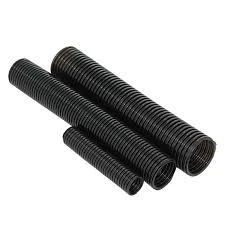Understanding the Function and Advantages of Synchronous Timing Belts in Engineering Applications
Understanding Synchronous Timing Belts A Comprehensive Guide
Synchronous timing belts are integral components in a variety of mechanical systems, facilitating efficient power transmission and control. Unlike traditional v-belts, synchronous belts operate on the principle of positive engagement between the belt and the driving gears or pulleys, ensuring that the belt's movement is synchronized with the components it drives. This attribute is crucial in applications requiring precise timing and positioning, such as in automotive engines, robotics, and industrial machinery.
The Construction of Synchronous Timing Belts
Synchronous timing belts are typically made from a blend of rubber and reinforcing materials like fiberglass or steel. The belt features notches or teeth along its inner surface that mesh with corresponding teeth on the pulleys. This design eliminates slippage and reduces the risk of misalignment, making synchronous belts highly reliable in maintaining fixed distances between rotating elements. Their construction also minimizes the noise produced during operation, contributing to a quieter environment in settings such as manufacturing plants and workshops.
Applications of Synchronous Timing Belts
One of the most common applications of synchronous timing belts is in automotive engines. In these systems, they connect the crankshaft to the camshaft, ensuring that the engine's valves open and close at the correct times relative to the piston’s movement. This precise timing is critical for maintaining engine efficiency and performance, preventing issues such as valve collisions.
In addition to automotive uses, synchronous timing belts are prevalent in industrial machinery. They are found in conveyor systems, CNC machines, and packaging equipment, where precise control of motion is required. Moreover, in robotics, these belts allow for exact movements and positioning, which is essential for tasks such as assembly, welding, and material handling.
synchronous timing belt

Advantages of Synchronous Timing Belts
The benefits of using synchronous timing belts are numerous. First and foremost, their ability to maintain precise timing and synchronization between components significantly enhances the performance of machinery. This precision not only improves efficiency but also extends the lifespan of the equipment by reducing wear and tear.
Additionally, synchronous timing belts have lower maintenance needs compared to other types of belts. Since they do not slip, there is less need for frequent adjustments or replacement, leading to reduced operational costs over time. Their resistance to stretching and deformation also contributes to their durability, making them a cost-effective choice for many applications.
Selecting the Right Synchronous Timing Belt
When choosing a synchronous timing belt, several factors must be considered. The specific applications and operational requirements dictate factors such as the belt’s size, tooth profile, and material. It is essential to ensure that the belt matches the specifications of the pulleys it will engage with. Additionally, the environmental conditions—such as temperature, humidity, and exposure to chemicals—should also influence the material choice to ensure optimal performance.
Conclusion
Synchronous timing belts play a critical role in modern engineering and automotive design, offering unmatched performance through their precise timing capabilities. As technology advances, the design and material composition of these belts are continually improving, leading to even greater efficiencies and applications across industries. Whether in a vehicle’s engine or in an automated production line, synchronous timing belts are vital components that help ensure the smooth and efficient operation of various mechanical systems. Understanding their importance and functionality will aid engineers and technicians in selecting the appropriate belts, ultimately enhancing the reliability and performance of their equipment.








